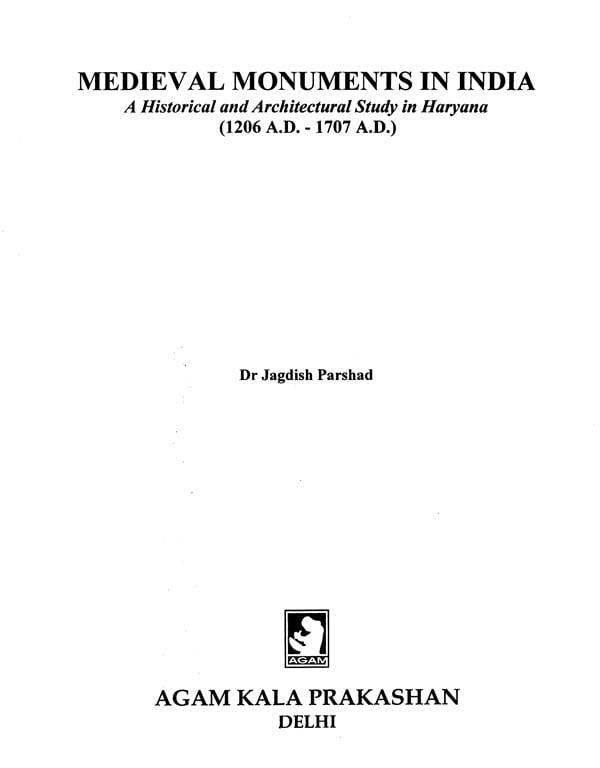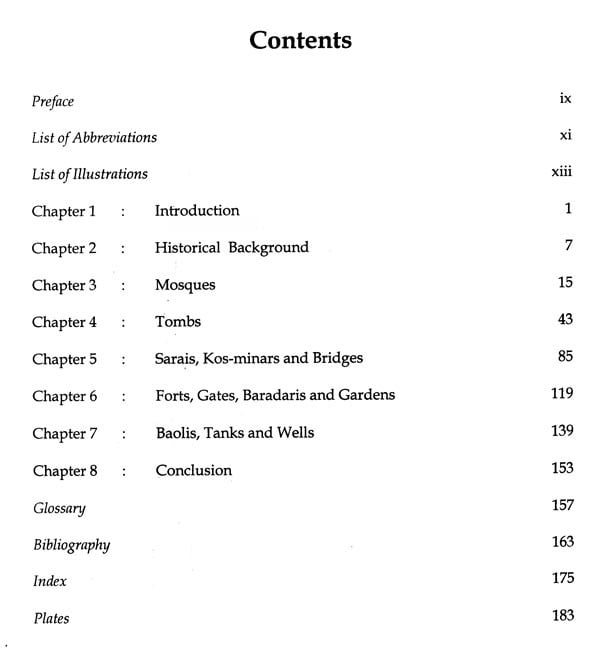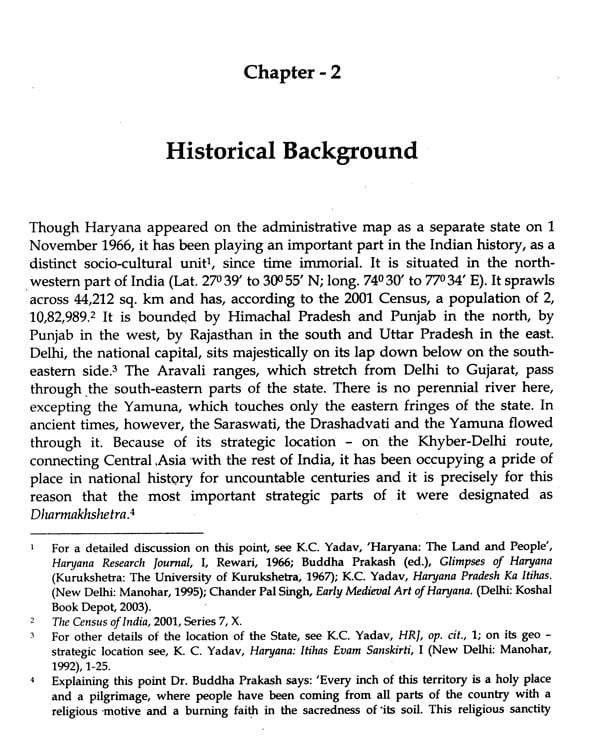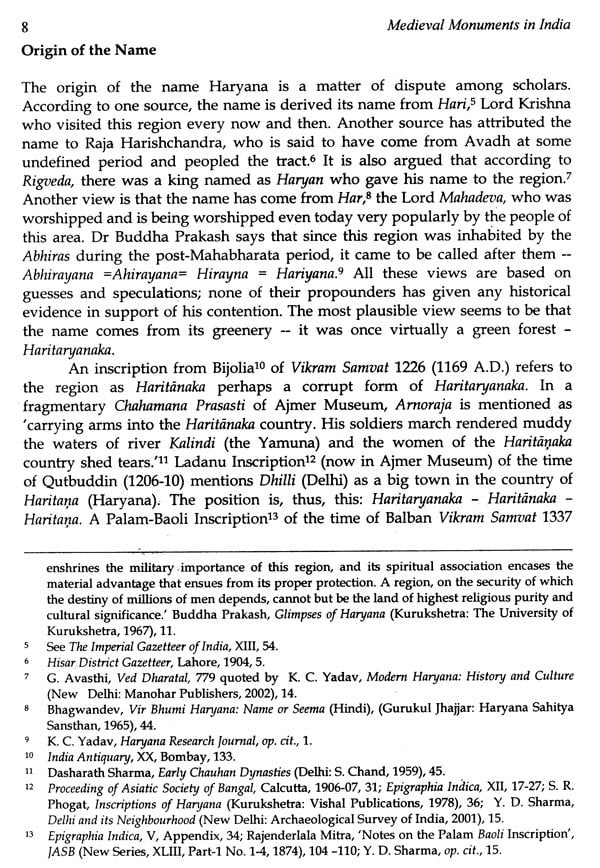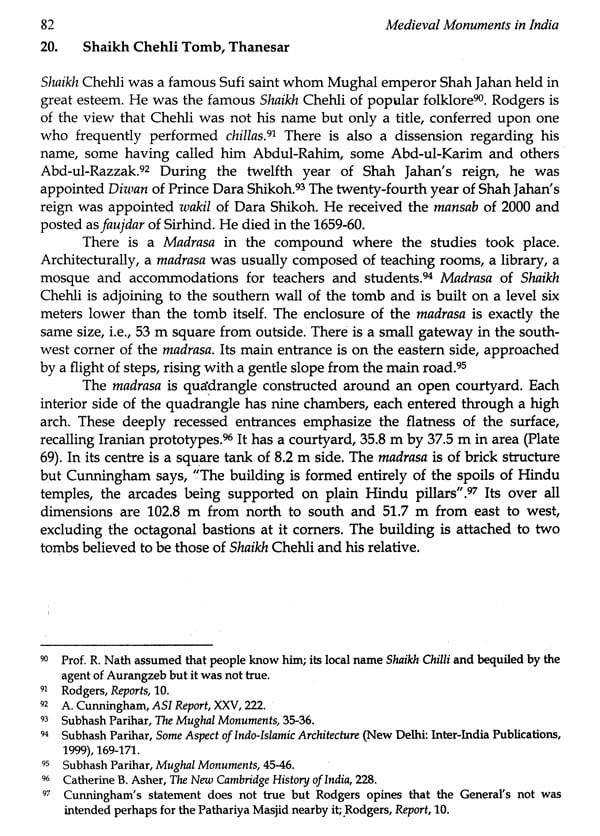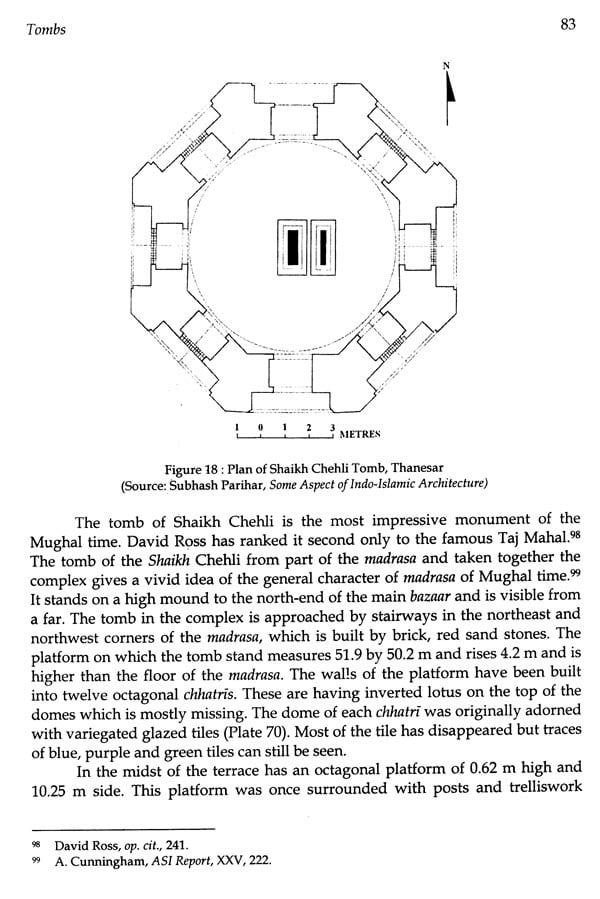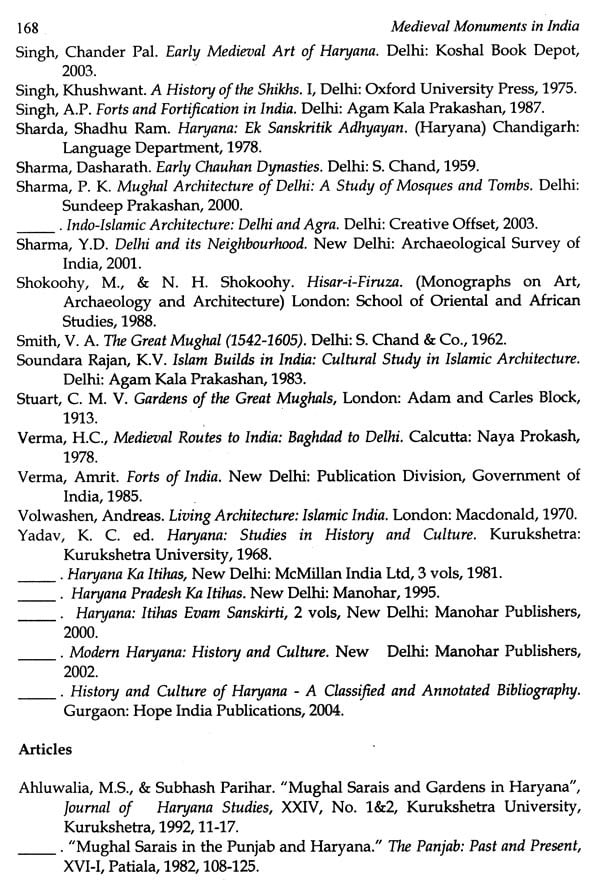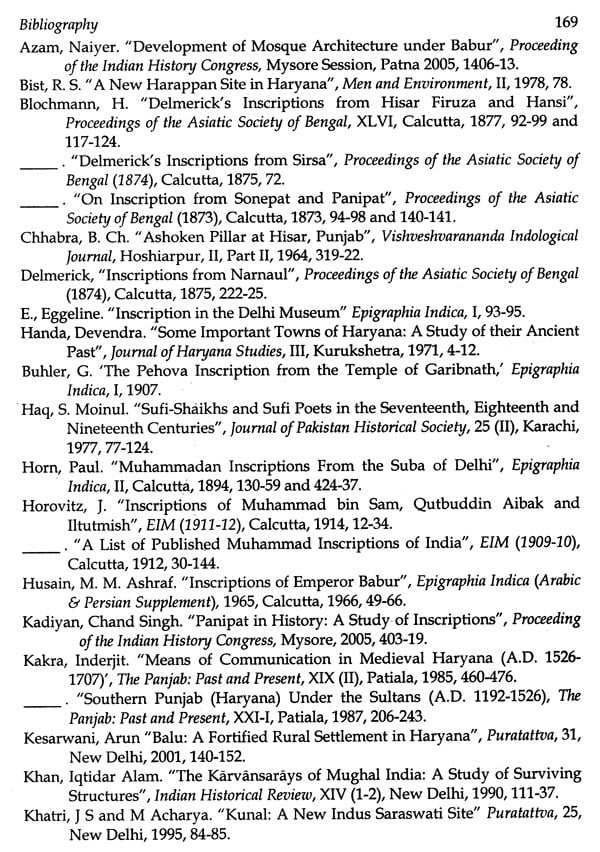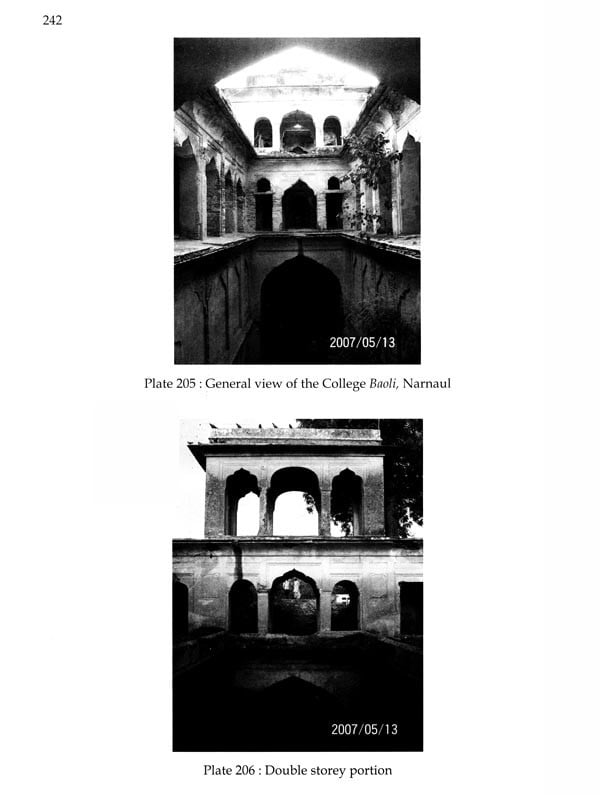
Medieval Monuments in India- A Historical and Architectural Study in Haryana (1206 A.D.-1707 A.D.)
Book Specification
| Item Code: | AZG778 |
| Author: | Jagdish Parshad |
| Publisher: | AGAM KALA PRAKASHAN, DELHI |
| Language: | ENGLISH |
| Edition: | 2011 |
| ISBN: | 9788173201141 |
| Pages: | 260 (Throughout B/w Illustrations) |
| Cover: | HARDCOVER |
| Other Details | 11.00x9.00 inch |
| Weight | 1.09 kg |
Book Description
The importance of medieval monuments lies not only in its being an earliest account synthesizing the available information but also as a benchmark for the changes in the building and their landscape. The work is therefore of outstanding value notwithstanding the change in perception due to new material and research. The work is aimed at an attempt to focus light on the panoramic view of the architectural investigation in Haryana in the past and also by the author in recent years for better understanding of the architectural heritage lying hidden and gradually being exposed at the threshold of the orient.
Profusely illustrated with maps, drawing and photographs. The book embodies the latest researches on the subject and will fascinate not only the tourists, scholars, and serious students but also the lay readers.
He is very energetic, dynamic and dedicated young scholar of history and archaeology. He has attended many National and International Seminars. He has published many research papers in reputed Journals. He is a life membership of the 'Museum Association of India' and 'INTACH'. His forth coming books are 'Narnaul: Its History and Architecture' and Bhartiya Marnmurti Kala.
India has a rich crop of medieval monuments which are scattered in every part of the country. Some monuments are recorded but other are still lying unnoticed and have still not found place in the records of Indian history. The theme of my work is 'Medieval Monuments in India: A Historical and Architectural Study in Haryana' on the basis of medieval structures. Monuments are an essential part of our city. These monuments are also linked directly with life of the inhabitants. Some scholar seems that there are no monuments in Haryana state but I clear the doubt that there is lot of medieval monuments scattered all over Haryana.
The present work is a survey of the rich medieval architectural heritage of the Haryana state. The book covers the monuments erected during the period 1206 AD to 1707 AD, ie., during the Sultanate and Mughal period. I have opted for a very appropriate subject to work on, monuments of great importance are lying in a neglected condition, and hence by working on the subject, I have brought out the general concern of the sensitivity towards our heritage.
The subject has divided into eight chapters. The first chapter describes the introduction of the subject. The second chapter briefly delineates the historical background of the state. After this chapter, I start the survey of monuments, classified on typological basis. The third and forth chapters describe mosques and tombs respectively. The fifth chapter covers monuments related with travel (sarai, kos-minars and bridges) all of which were built during the Mughal period. Sixth chapter deals with forts, gates, baradaris, and gardens from the subject matter. Seventh chapter comprises a survey of water-structures like baolis (stepwells), tanks and wells. And the last chapter describes the conclusion of the work.
I have put a great effort in this work, traveling through the length and breadth of the state of Haryana.
**Contents and Sample Pages**
